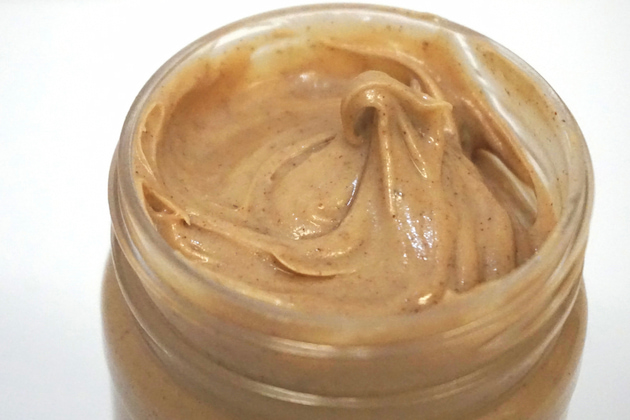Cornell Corner
Maple hazelnut spread, a new product from Cornell
Cornell Maple Program announces latest development
By AARON WIGHTMAN | SEPTEMBER 19, 2024
VAN ETTEN, N.Y.—Maple hazelnut spread is a novel confection developed by the Cornell Maple Program.
It utilizes hazelnuts and maple sugar, along with other carefully selected ingredients, to create a creamy spread with rich flavor and a smooth mouthfeel.
Initial market research reveals a strong consumer liking.
For producers interested in expanding product offerings, the Cornell Maple Program has posted a fact sheet with recipes and other details on the new product development website.
The market for nut based spreads continues to grow as consumers learn about the benefits of the fats they contain and search for healthy sources of protein.
These products are typically made by processing nuts along with added fats, proteins, sweeteners, and stabilizers to form a smooth textured spread.
Examples of these products are abundant on the shelves of many grocery stores where a wide selection of almond, peanut, hazelnut, cashew, and other nut spreads sometimes occupies considerable shelf space.
Many readers may be familiar with hazelnuts, which are also known as cobnuts and filberts.
These small nuts are prized for their sweet, buttery flavor which is enhanced through roasting.
They are a common feature in prepackaged nut mixes and their flavor profile has led to frequent use in deserts and other sweet confections.
They are also used to make the distinctly aromatic dessert liquer, Frangelico.
Hazelnuts can be pressed for a rich tasting oil that is high in healthy omega fatty acids, and the nut meat can be dried and processed into a flavorful pastry flour.
Most hazelnuts are harvested from the European variety, Corylus avellana, with Turkey providing the majority of the world’s supply.
Most domestically produced hazelnuts are grown in the moderate climate of Oregan’s Willamette Valley. Interestingly, hazelnuts are now cropping up in the maple belt where they are sometimes promoted as part of permaculture or agroforestry systems.
Cold and disease hardy hybrids developed from European hazelnuts and our native hazel, Corylus americana, have made commercial nut production feasible in the maple zone.
One area where hazelnuts are gaining traction is central NY where the Cornell Maple Program is headquartered.
A growing number of landowners are planting their fields with hazelnuts, chestnuts, and other woody perennial crops - sometimes alongside maple sugaring operations on diversified farms. Locally, a group of these landowners has banded together to form the NY Tree Crops Alliance.
One of their goals is to purchase harvesting and processing equipment, including a commercial nut butter grinder, to create the capacity for local, small-scale production.
Maple hazelnut spread was designed to build on this trend along with the popularity of other hazelnut products such as Nutella.
To develop this product, the Cornell Maple Program first collaborated with student researchers Albert Charles, Billy Tu, Robin Cho Kim, and Annie Le Nguyen in the Department of Food Science.
We developed two formulas through this process; one featuring maple and hazelnut, and a second formulation that also incorporates chocolate.
The initial phase of research investigated basic formulation options and sugar content, as well as processing methods.
Through this work we determined that maple sugar, rather than syrup, was needed to achieve the desired consistency.
We also found that processing with a melanger, which is a stone-wheeled grinding device, created a smoother textured product than a food processor.
In the next stage of product development, we refined the formula by testing a variety of fats and proteins to find flavors with the greatest sensory appeal.
These ingredients were also selected for their thickening, emulsifying, and stabilizing properties.
A different combination of these ingredients was found to be optimal for the maple recipe and the chocolate maple recipe.
Both formulations fared well in consumer tests with 90% of test subjects liking the maple hazelnut spread and 95% liking the chocolate maple hazelnut formulation.
Consumers especially liked the hazelnut flavor in each recipe (75% and 77%, respectively) and creamy texture (88% and 91%, respectively).
Flavor and other sensory attributes were also met with high levels of approval.
A cost analysis found that ingredients for a 200 gram batch cost $1.96 for maple hazelnut spread, and $1.80 for chocolate hazelnut spread.
For comparison, a survey of current market prices found that premium chocolate hazelnut spreads sell for $5.71 to $8.80 for a 200 gram unit.
Variable costs such as equipment, labor, utilities, and packaging were not included in the analysis.
Both formulations achieve shelf stability through low water activity, meaning they do not contain enough water to support the growth of spoilage microbes.
However, because these products require specialized equipment and extra steps to ensure food safety, they are subject to more safety regulations than pure maple products.
First, in order to manufacture and sell these products, the recipe must receive approval from a process authority.
Obtaining a scheduled process approval is relatively simple and inexpensive, but may require adjustments to the recipe and may take several months.
In addition, this product must be made in a licensed kitchen that has been inspected and certified by the applicable regulatory authority in your jurisdiction, typically your state regulatory agency.
A fact sheet with more details on maple hazelnut spread is available at CornellMaple.com in the New Products Development tab.
This document contains complete recipes for both formulations, as well as further details about food safety, consumer preferences, and market conditions.
Questions about this product can be submitted through the “Contact Us” form on the Cornell Maple Program website.
This project was made possible through a grant from the U.S. Department of Agriculture (USDA) Agricultural Marketing Service.
Its contents are solely the responsibility of the authors and do not necessarily represent the official views of the USDA.

































